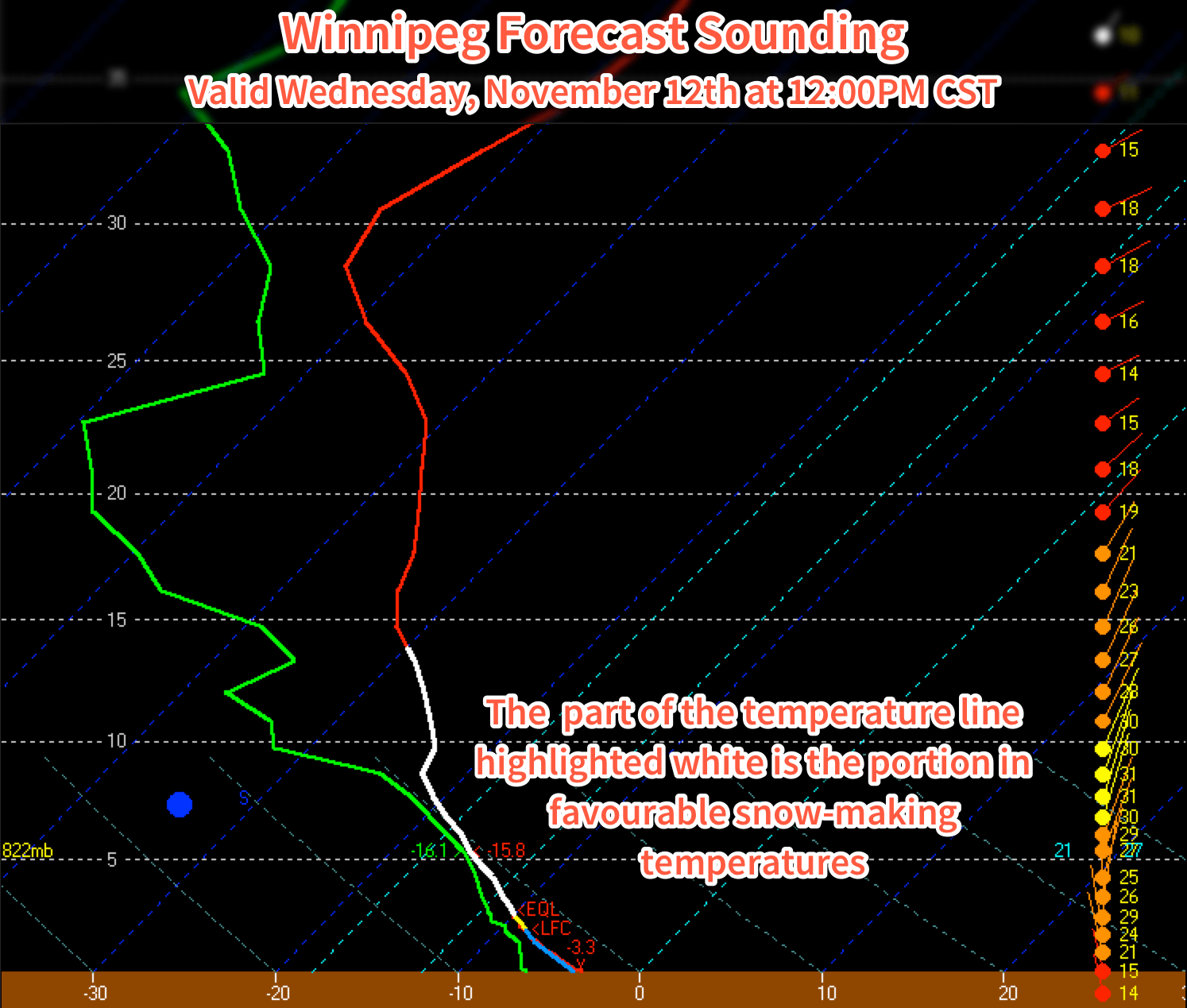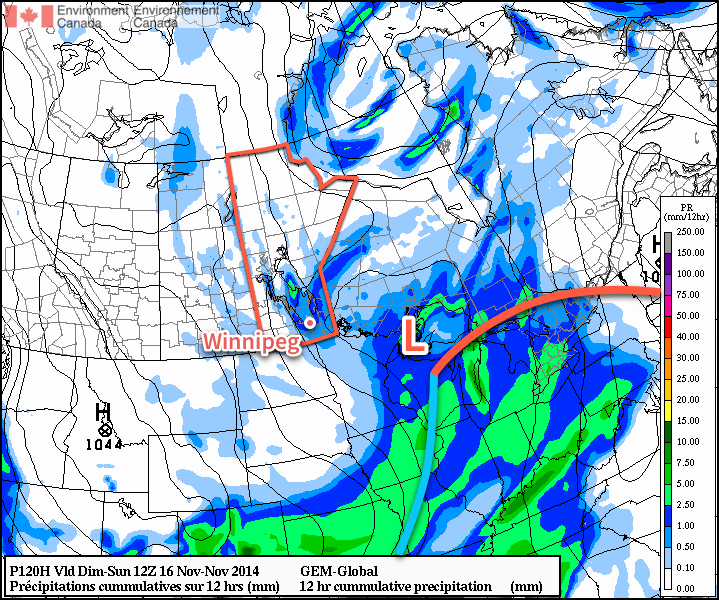A reinforcing shot of Arctic air is pushing into Southern Manitoba for the remainder of the week. The cooler weather will gradually settle things and bring more sunshine than we’ve seen in the past while to the region, but before that happens another day of flurries lies ahead.
Today will bring mainly cloudy skies with flurries continuing to drift southwards from the Interlake as general instability coupled with optimal temperature profiles[1] results in periods of snow throughout the day today. Snow will begin tapering off in the late afternoon or evening as clouds begin to break up and the northerly winds around 30-40km/h shift more northwesterly and gradually weaken.
Temperatures will climb to a high around -5°C and drop to -9 or -10°C tonight.

Thursday will bring mixed skies as clouds gradually clear throughout the day. The same temperature profile will be in place as today, so any low-level clouds will likely be able to produce some light flurry activity, but nothing significant is expected. Winds will shift to westerly at around 15-25km/h for much of the day as a ridge of high pressure slumps into the Dakotas from Saskatchewan. Expect a low near -14 or -15°C under clear skies on Thursday night.
Friday will be a beautifully sunny day, but it comes with the cost of being the coldest day so far. With relatively light west to southwesterly winds flowing out of the high pressure system to our south and southwest, temperatures will climb only to around -9°C. Temperatures will drop back into the mid-minus teens on Friday night under clear skies.
Cold Weather, Flurries for the Weekend
This weekend looks to bring flurries back to Southern Manitoba as another cold front pushes through on Saturday night. Snow will likely be found along the front as well as behind it through the day on Sunday as another unstable northwesterly flow develops.

Cold weather is expected to continue behind the front as another shot of Arctic air moves into the province.
- Snow grows best in temperatures between around -8°C to -15°C between the surface and around 700mb. The thermal profile over Winnipeg matches those temperatures nearly exactly which will make it very easy for snow to develop. ↩
